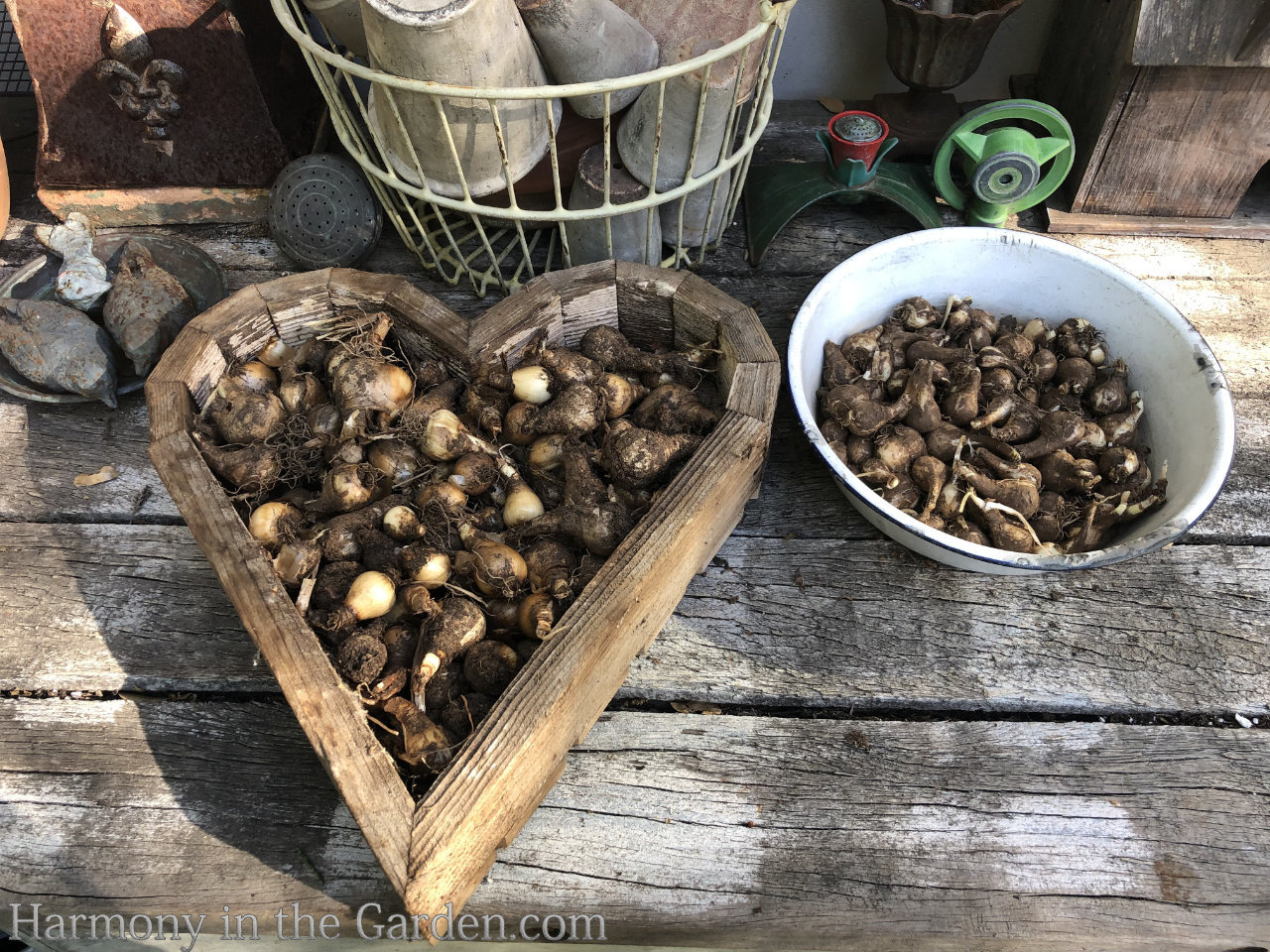
This time of year, I’m often asked what my favorite spring bulbs for warm climates are and how I incorporate them into my garden’s design.
If you garden in a warmer climate (as I do in zone 9), it’s not too late to get your spring-flowering bulbs in the ground.
Ideally, I aim to get all bulbs planted by December 1st, so they have plenty of time to settle and adequately ‘chill’ before spring arrives. But there’s still time if you’ve had a busy fall, as I have!
In fact, I’m heading outside this weekend to finish planting the last of my bulbs before settling in for the holidays.
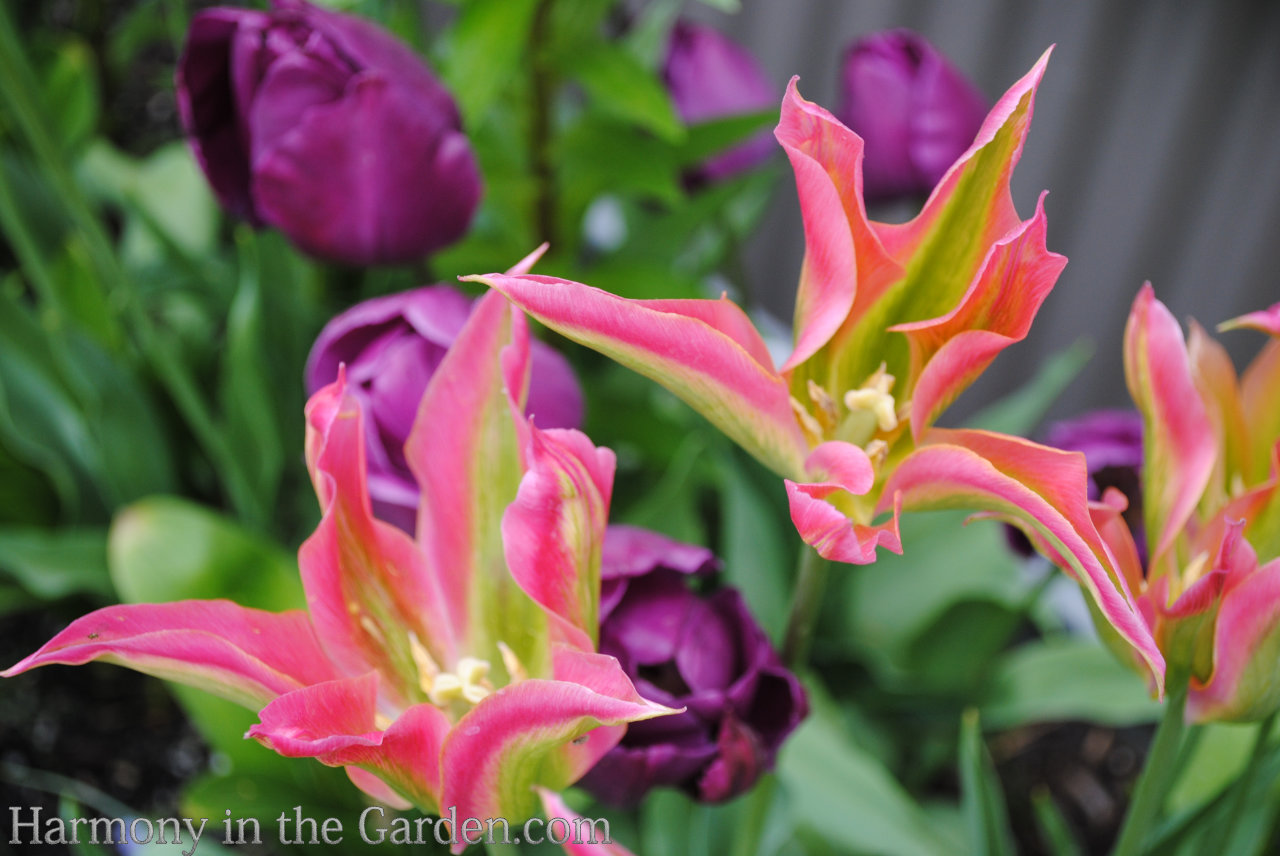
First, though, let’s talk a bit about winter chill and what it means for those who live with warmer winters.
Winter chill is necessary for most (but not all!) bulbs to bloom in spring. The prolonged colder temperatures force the bulbs into dormancy, allowing them to rest before their big show.
Many daffodils and tulips are notorious for requiring colder temps (12+ weeks of soil temperatures that are 40 degrees or below), while galanthus, muscari, and others (mentioned below) require much less.
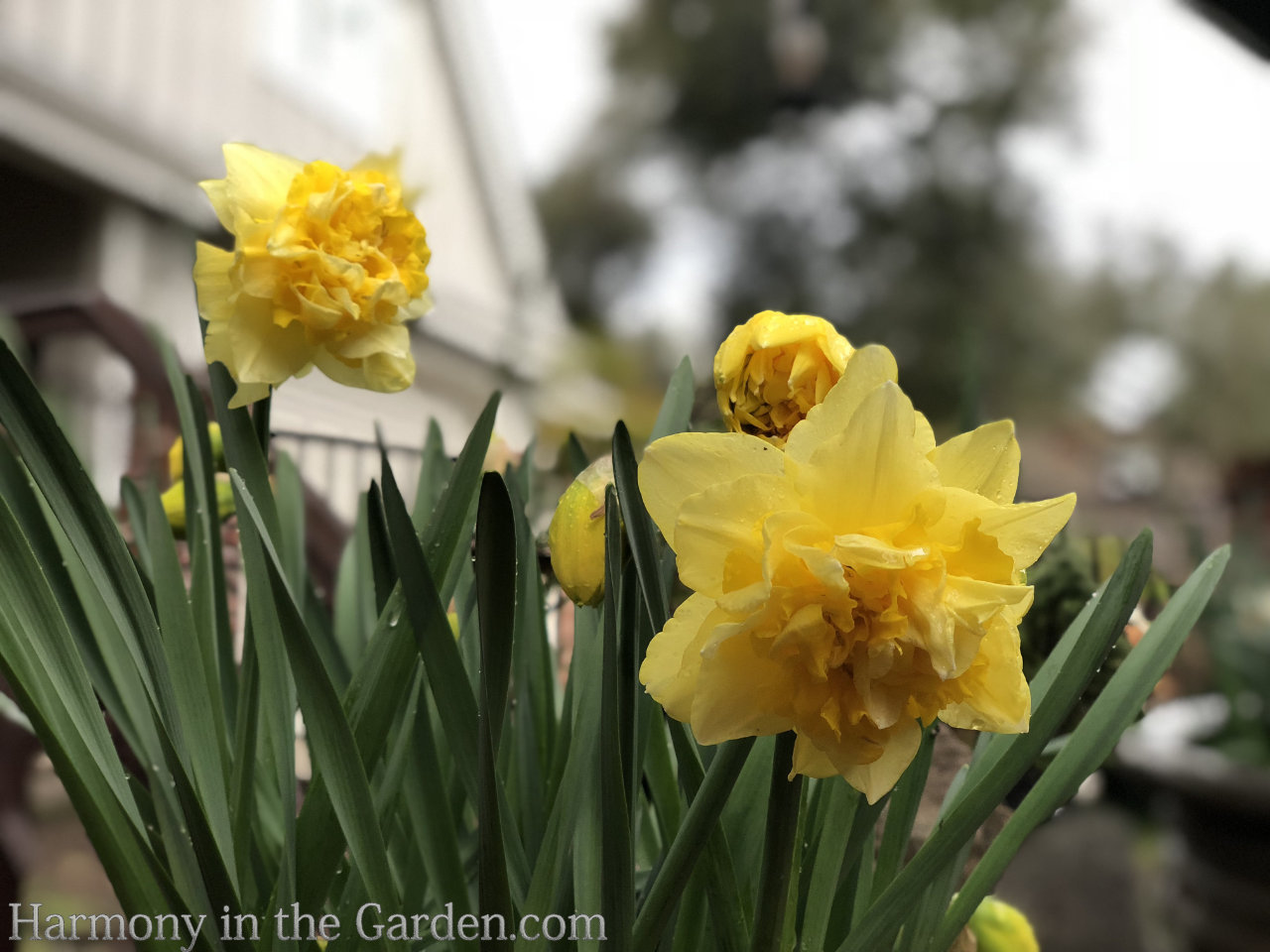
Generally speaking, bulbs that come up early in the season need the least chilling time (think: snowdrops and cyclamen, for example) versus bulbs that appear later in the spring (like narcissus and tulips.)
Okay, so let’s begin by discussing how I design with spring bulbs, followed by a list of my favorites for warm climates.
Plus, at the end of this post I’ll include a recent video I made for Garden Design about fall-blooming bulbs.
Treating Bulbs like Ephemerals
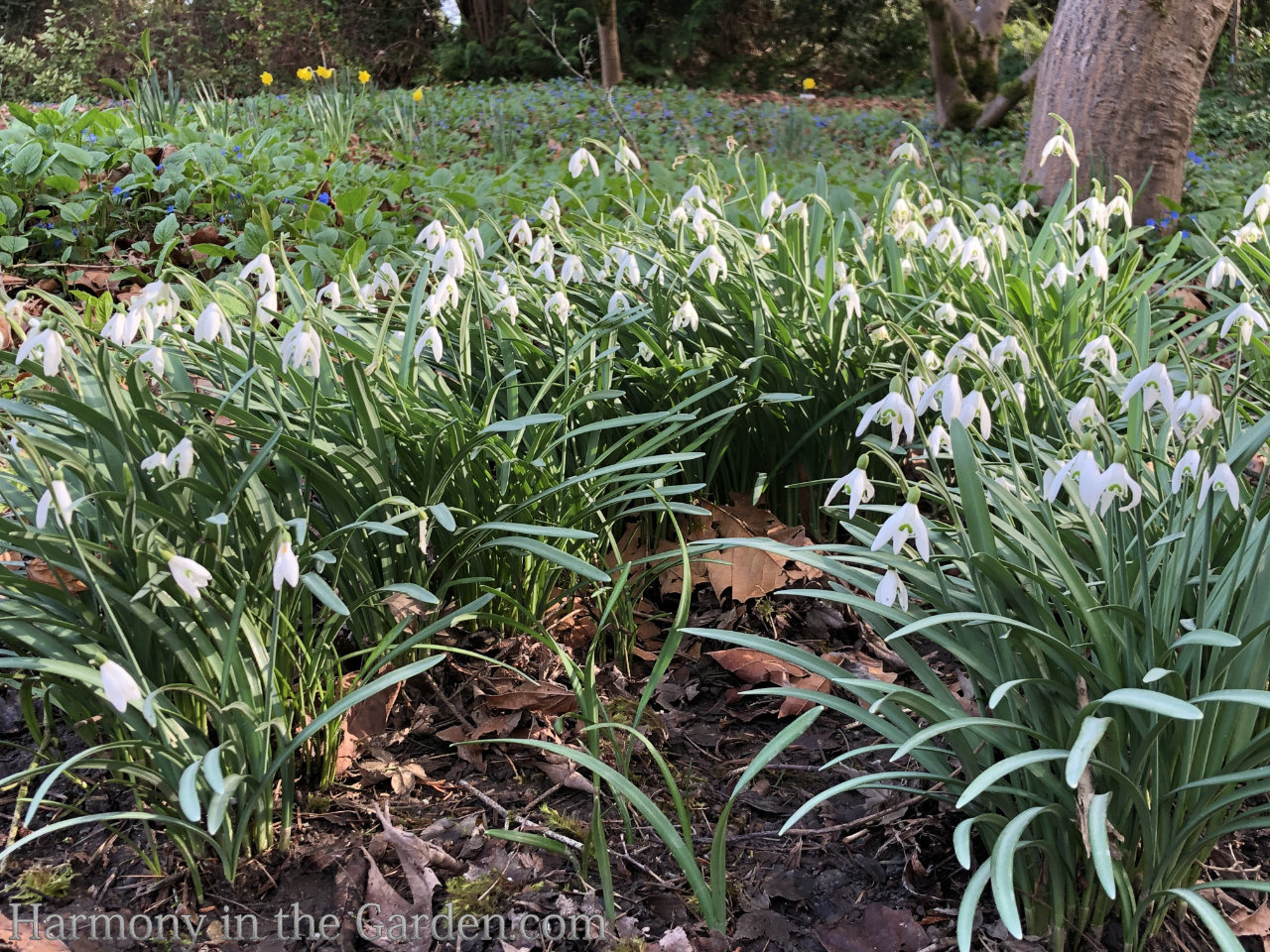
If the bulbs are to be planted in the ground (vs. in a container), I often treat them as ephemerals.
For those unfamiliar with ephemerals, they’re typically dainty-looking, diminutive wildflowers that make a brief appearance in very early spring.
Seemingly overnight, they’ll pop up underneath deciduous trees, before the trees’ leaves begin to grow.
Once the canopy of the trees fills out again, the ephemerals fade away until the following spring.
Even though bulbs aren’t technically ephemerals, I treat them as such by planting them in the empty spots left beneath large deciduous shrubs.
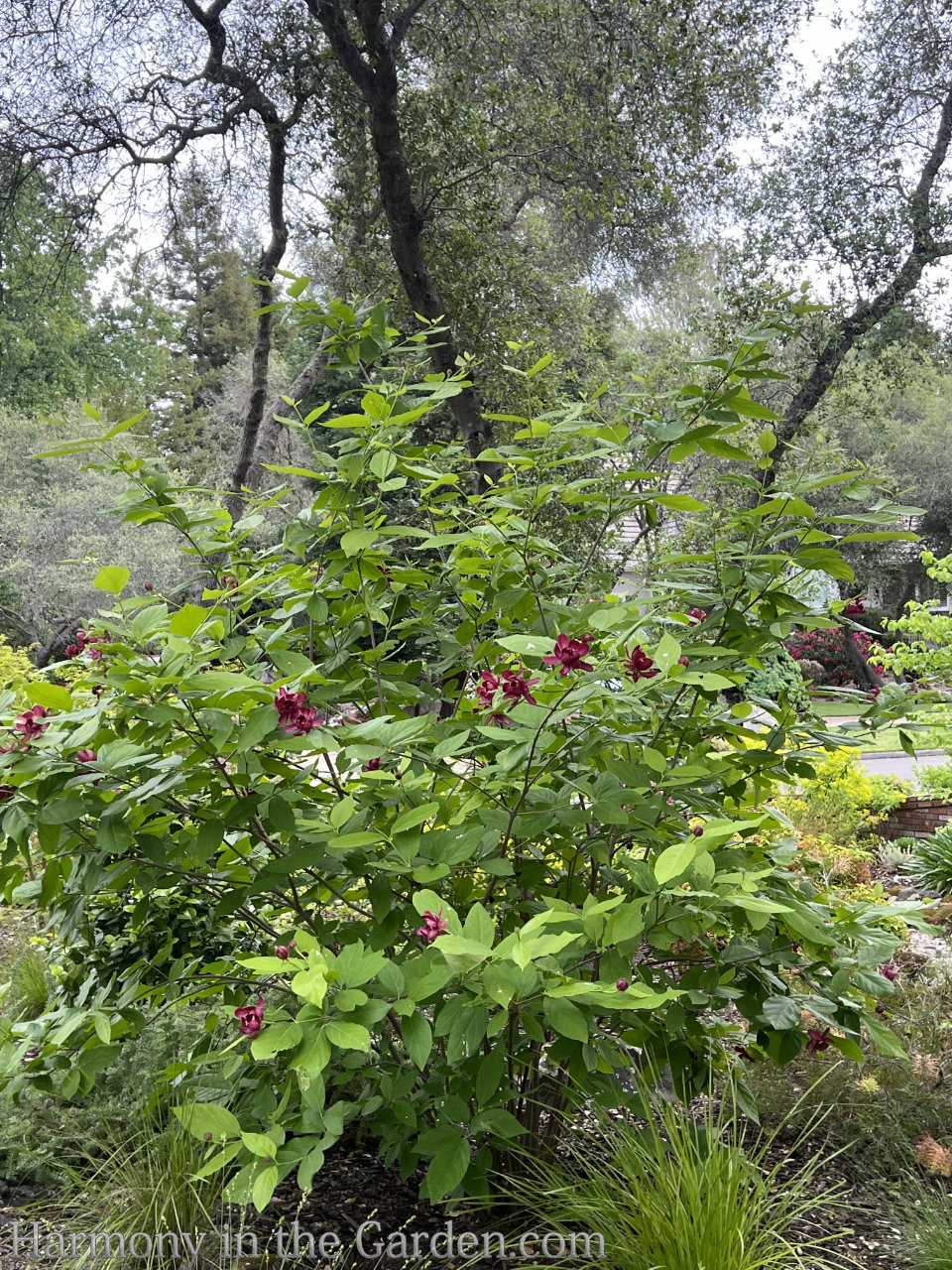
For example, this is one of my very favorite shrubs in my garden – the native calycanthus ‘Aphrodite.’
It’s not only glorious in the spring and summer, covered with robust, sweet-smelling garnet-colored flowers, but also in the fall when it’s a blaze of color.
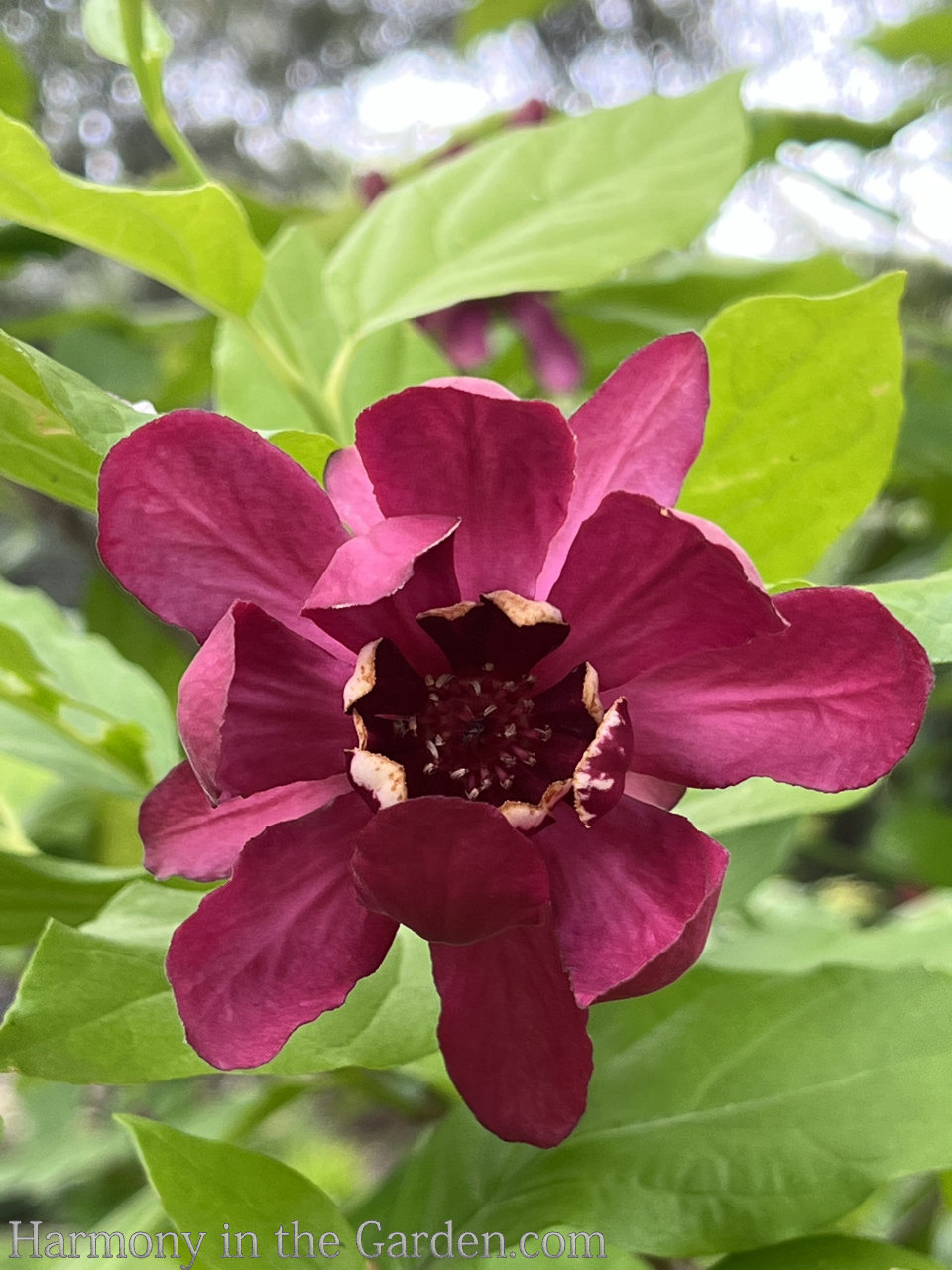
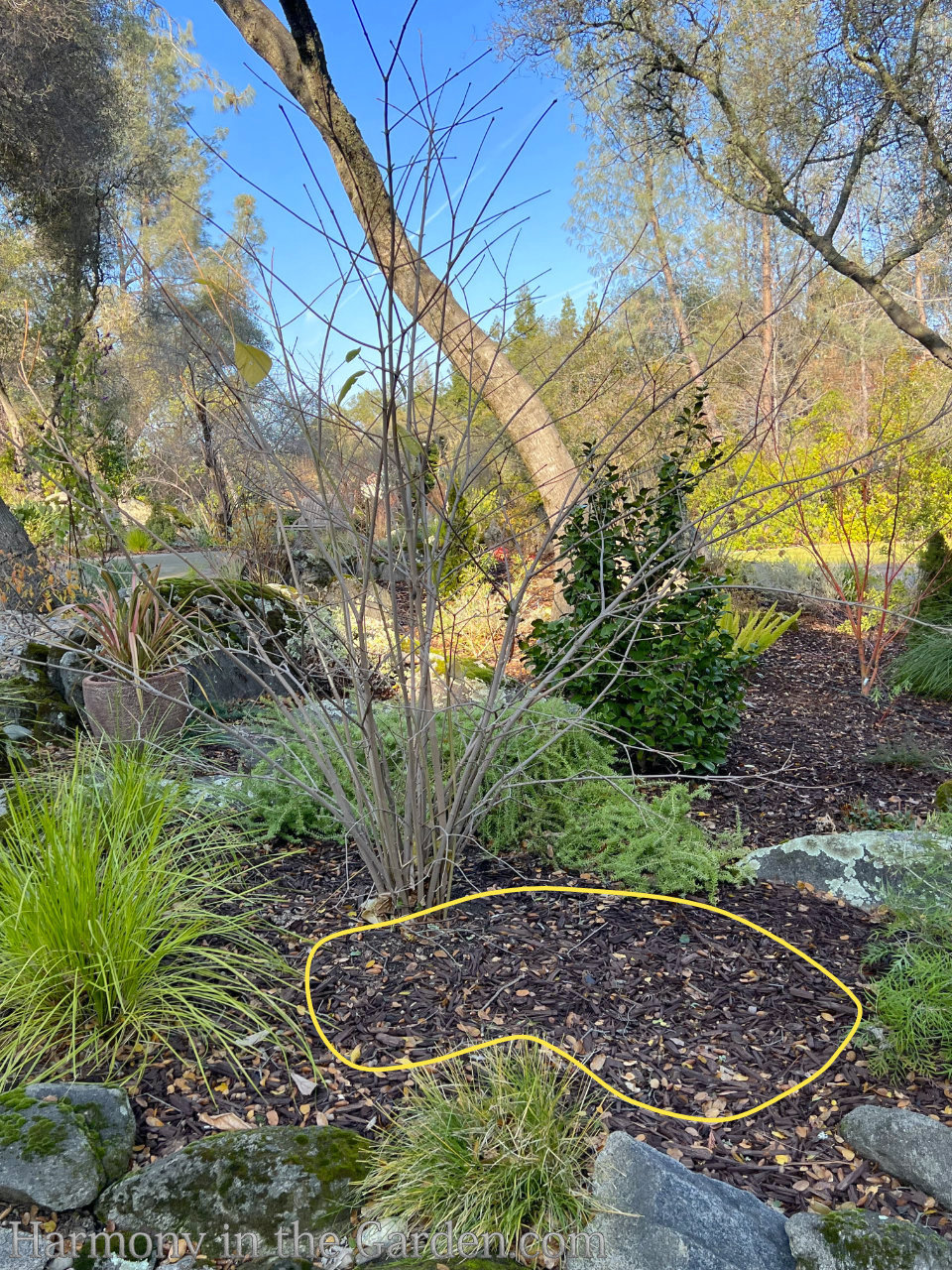
But in the winter, without any leaves, I’m left with a blank spot under the shrub.
This empty spot (outlined in yellow) is ideal for planting early-blooming bulbs, like snowdrops, narcissus or muscari (below.)
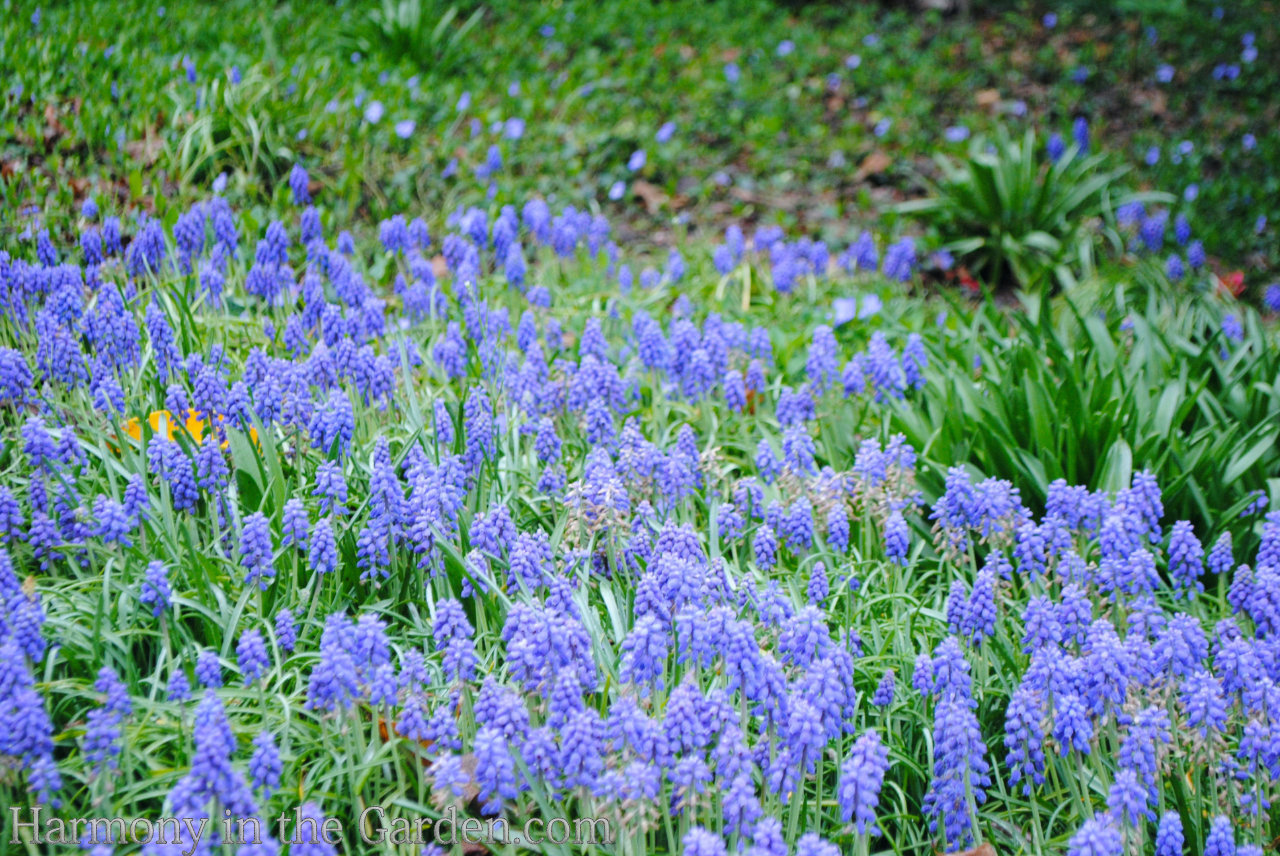
Disguise Dying Foliage
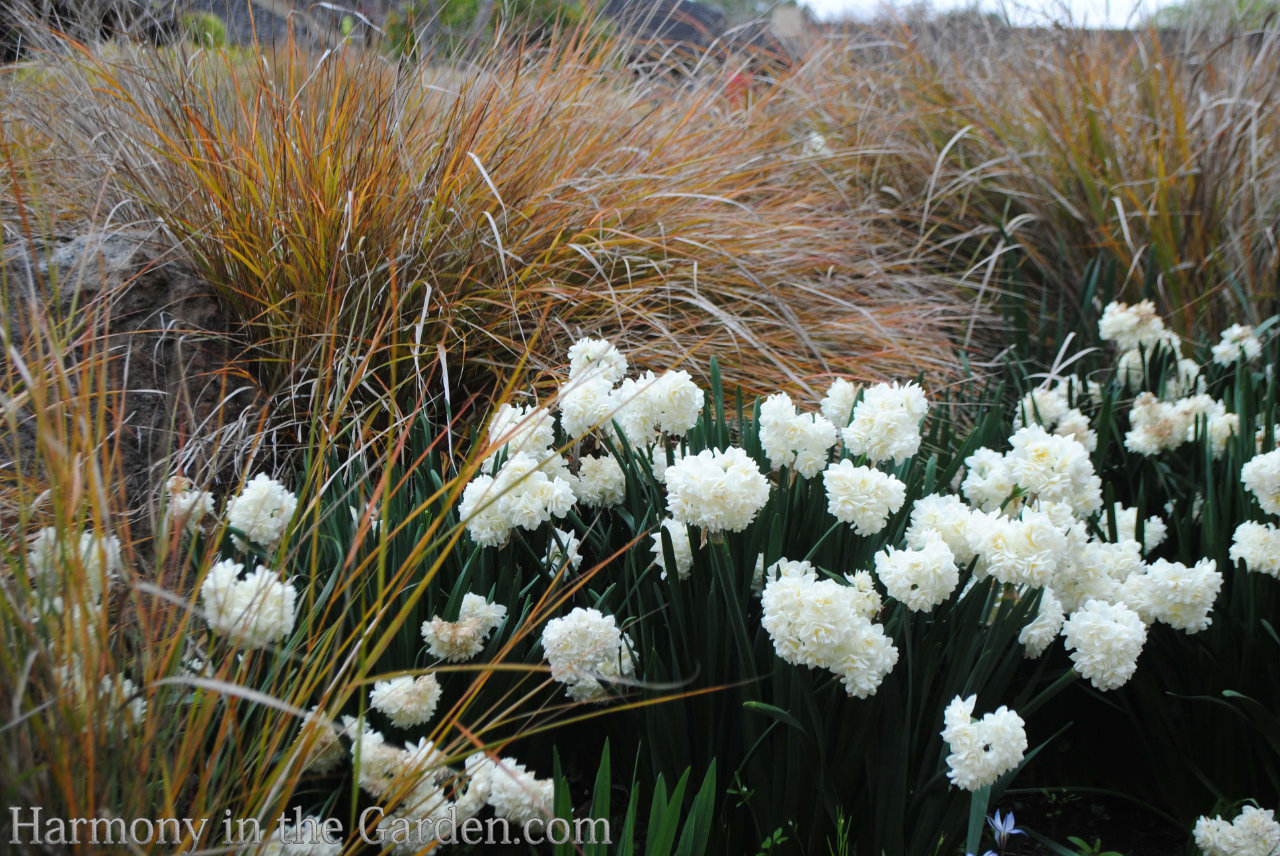
Once the bulbs finish blooming, it’s tempting to tidy up and remove the remaining foliage (especially as it ages and begins to look messy.)
However, it’s critical you resist the urge! The remaining leaves are busy gathering energy to store in the bulb for next year’s flower production.
Simply put, if you remove the foliage, you won’t get any flowers.
When designing with bulbs, I prefer to plant them behind or near low-growing perennials or shrubs.

Use nearby plants to hide the unsightly foliage until it withers away to wispy tan blades (at which point you can remove them.)
In this example, I’ve planted narcissus ‘Yaz’ and ‘Blushing Lady’ behind low-growing and evergreen grevillea ‘Mt. Tamboritha’.
Once the foliage begins to flop over, I neatly gather the strappy leaves and tuck them behind the grevillea.


Finally, once the foliage turns tan and brittle, it’s time to remove it. When it’s ready to be removed, it should easily pull away from the bulb, with very little effort.
To be safe, though, and to prevent accidentally yanking the bulb out of the ground, I usually use pruners to cut it back.
Plant in Drifts


When planting bulbs, make an impact by creating a drift with at least a dozen of each variety, resulting in a wow-factor moment. This is NOT the time to be skimpy – go ahead and pack ’em in!
By the way, in this photo, you can see one of my favorite tools to use for digging bulb holes – the Cobrahead.

One reason why I love this tool is the Cobrahead’s design – it has a spoon-shaped end with a pointed tip that slices through the soil.
And, it’s weighted to allow for super-fast, super-easy, and VERY satisfying ‘thunks’ when digging quick holes for bulbs (or when used for weeding oxalis – click here to read how I do this.)
CobraHead is a fantastic family-run business that makes all its tools in Wisconsin. They’re just awesome.
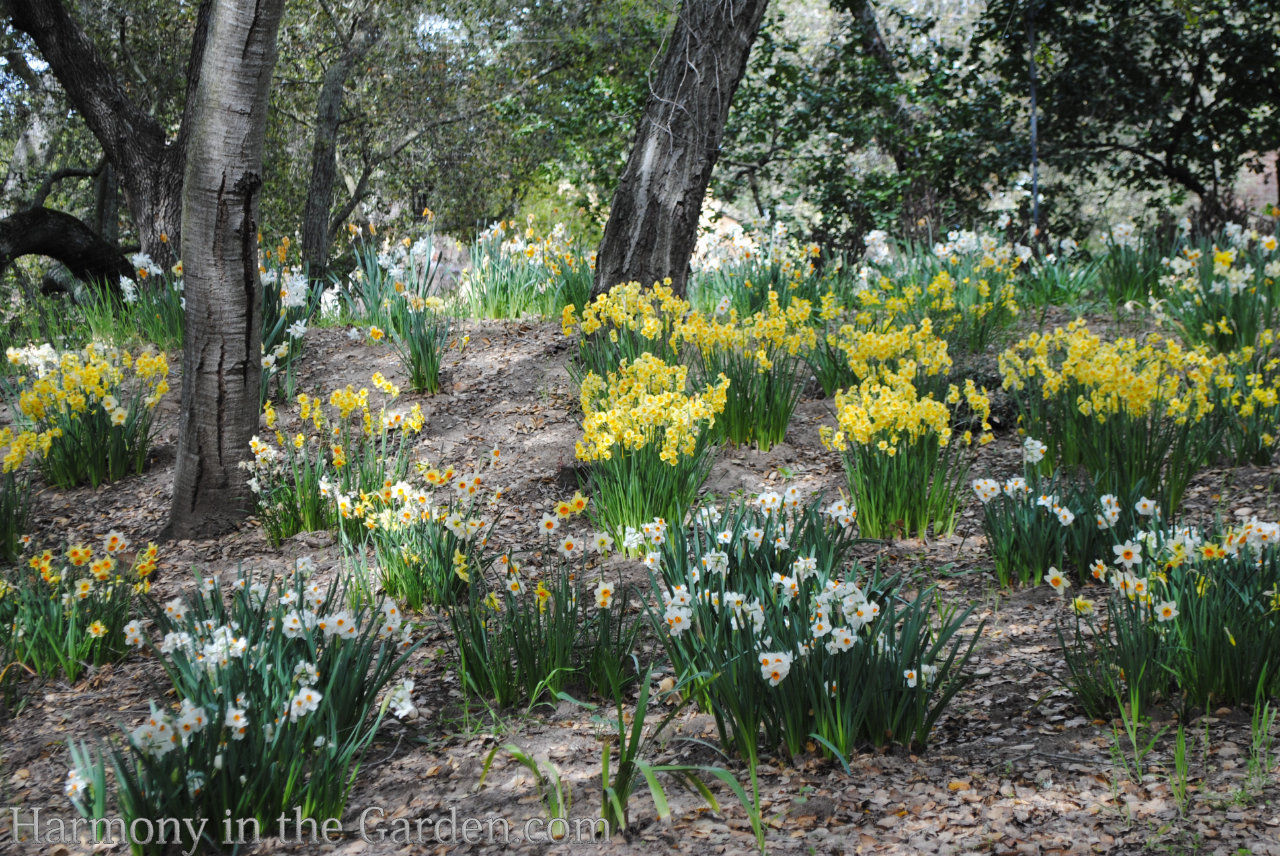
When planting bulbs in the garden, I prefer a natural look – as if they just happened to be growing there.
I achieve this by taking a handful of bulbs and loosely throwing them in the general area.
Where they land, they’ll be planted. It’s that easy.
This is a common technique among gardeners, and the end result is always more aesthetically pleasing than if each bulb was strategically set in a pattern.
Stagger Bloom Times
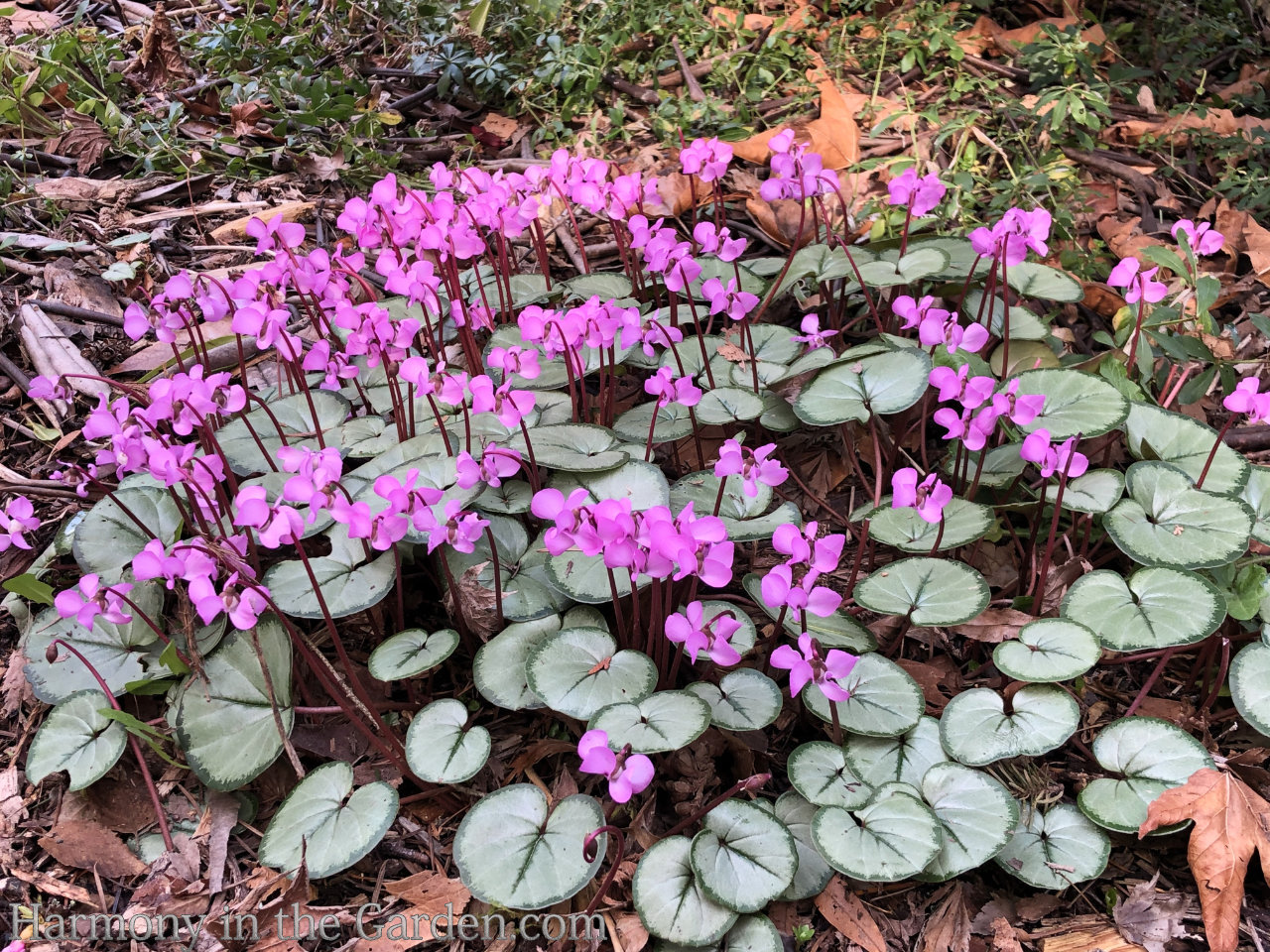
Just like designing traditional garden beds, with something blooming in all four seasons it’s important to include bulbs that also have varying bloom times.
For example, some of the earliest blooming bulbs are cyclamen, zephranthes (rain lily), galanthus (snowdrops), or crocus.
Next to bloom are narcissus, jonquils, and tulips, followed in late spring by scilla, Byzantine gladiolas, calla lilies, and alliums.
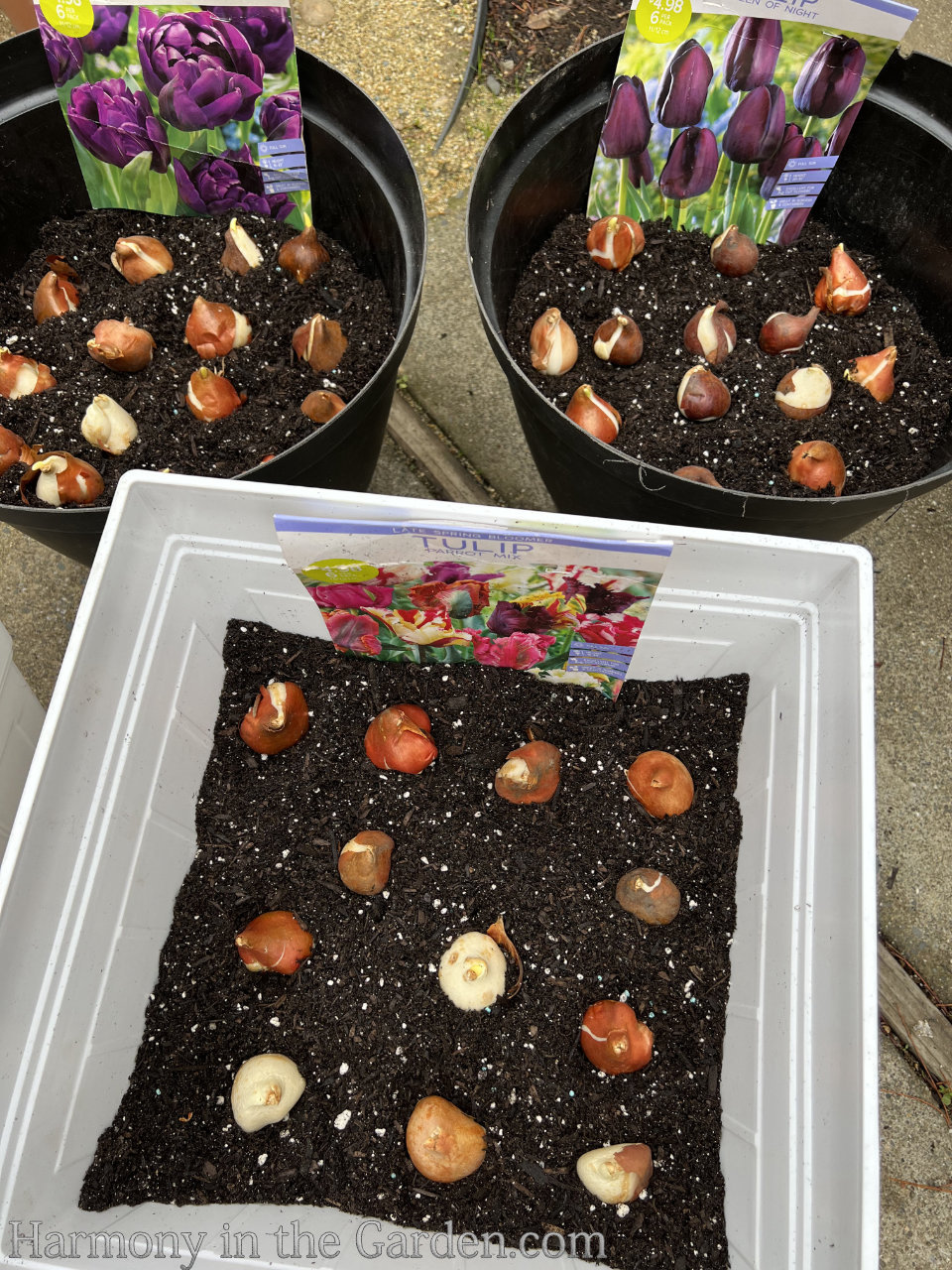
When planting bulbs in containers, staggering bloom times is easy.
In fact, this past weekend, I was visiting my daughter, helping her plant several containers full of bulbs.
I showed her the concept of ‘lasagna planting’ by layering the bulbs according to bloom time.
In the container, left, we planted late-spring blooming tulips in the bottom layer (about 8” below the surface.)

Next, we planted early-blooming crocus on the top layer, just a few inches from the surface.
In the spring, the crocus will bloom first, then as they begin to die back the tulips will push through and continue the spring bulb show.
Voila! Lasagna planting!
When it comes to feeding bulbs, I use an all-purpose bulb fertilizer (click here to see what I use.)
When first planting the bulb, I lightly mix in a small handful of bulb food at the bottom of the hole, and then again after the bulb has finished flowering (by sprinkling it on the top layer of soil.)
My favorite warm-climate spring bulbs
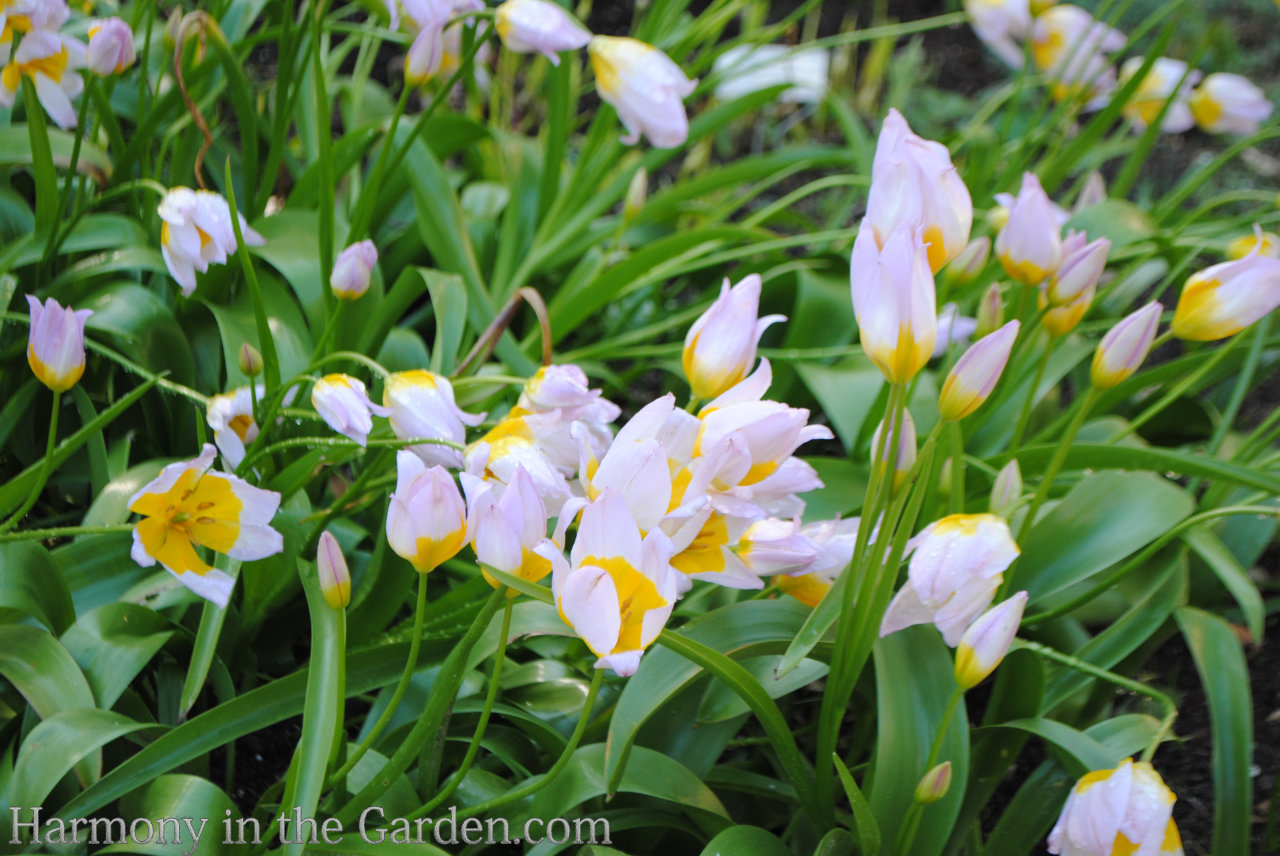
1. Species tulips (not traditional tulips!)
Species tulips are different from the traditional, long-stemmed or parrot tulips that require winter chill. Species tulips are typically much smaller and daintier. Examples are tulipa sylvestris, t. clusiana, and t. saxatilis.
Over time, these tulips will naturalize into charming colonies that welcome spring’s arrival.
If you want to plant traditional tulips, and you live in a warm climate, you’ll need to pre-chill them. Click here to read how I do this.

2. Narcissus (aka: daffodils, jonquils)
I’ve found that the vast majority of daffodils, narcissus, and jonquils prefer winter chill.
HOWEVER, if you search hard enough you’ll find some varieties that are just fine with our warmer winters.
Varieties that reliably return each year in my garden are: narcissus ‘Bantam’, n. ‘Avalanche’, n. ‘Thalia’, n. ‘Elka’,
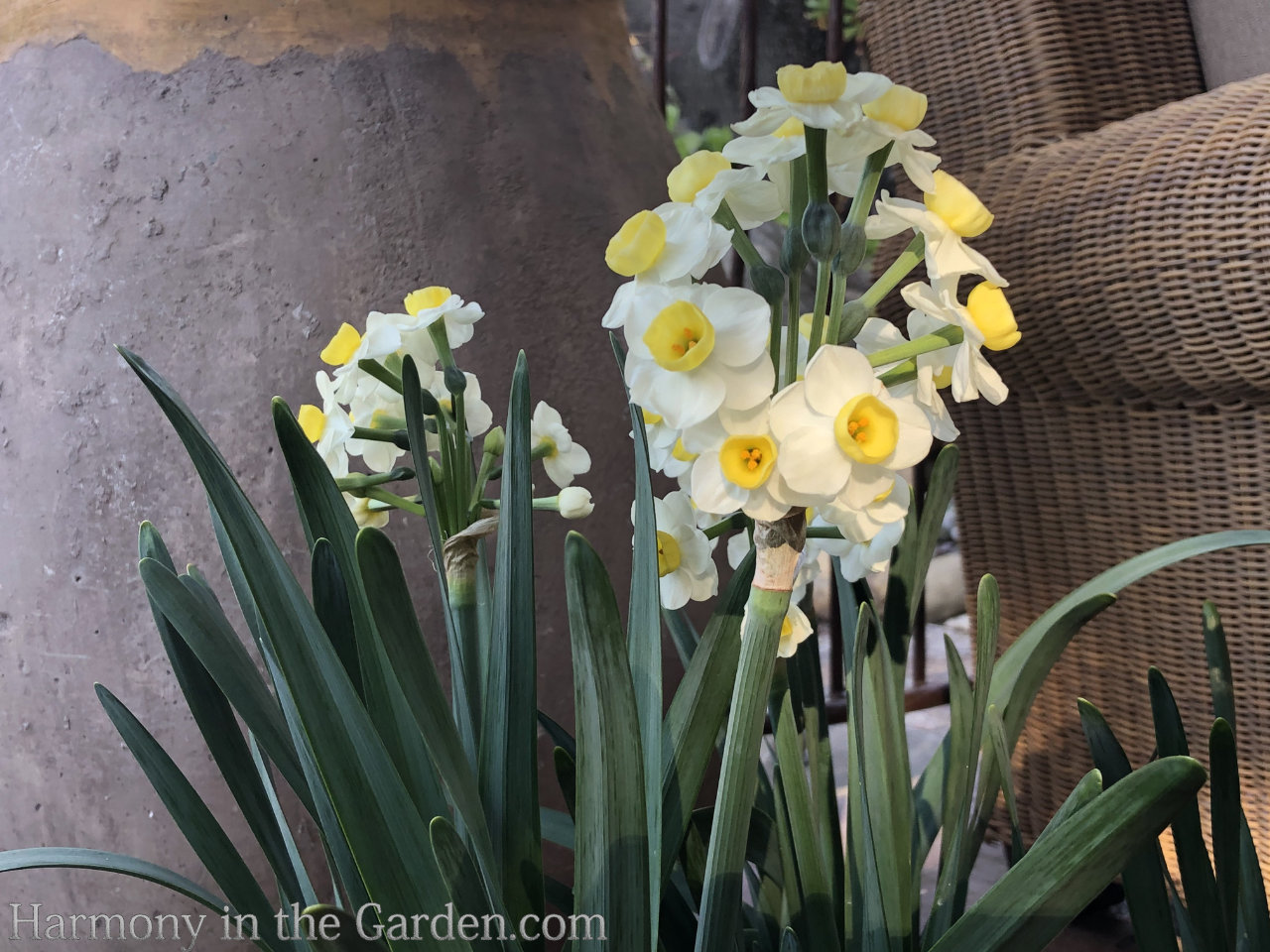

Narcissus poeticus ‘Firetail’ is an heirloom variety which returns in my garden every spring (which surprises me, as they’re listed as wanting colder temps, but hey – who am I to argue? )
And, as mentioned earlier in this article, narcissus ‘Blushing Lady’ and ‘Yaz’ are two of my favorites (both from John Scheepers.)
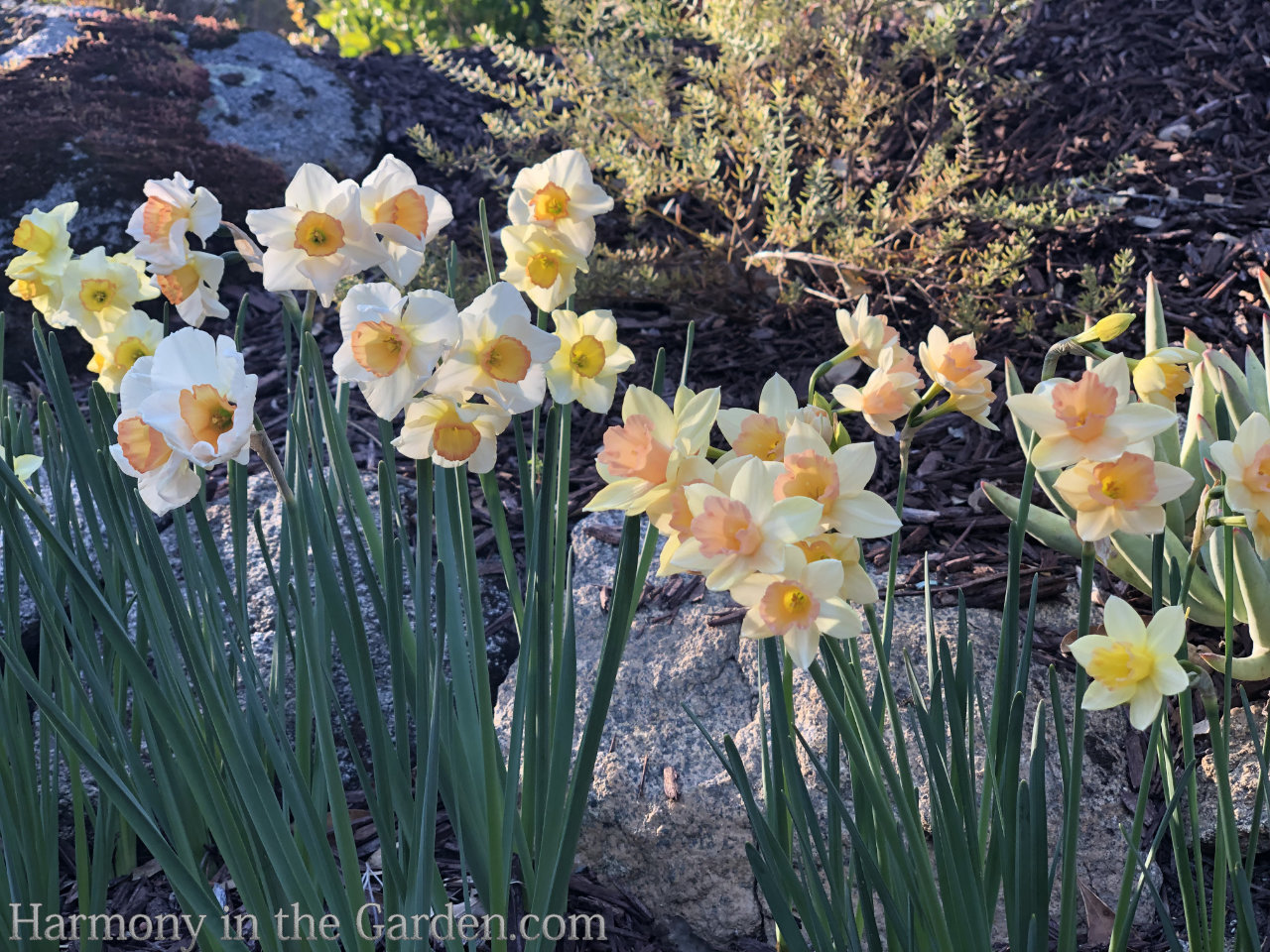
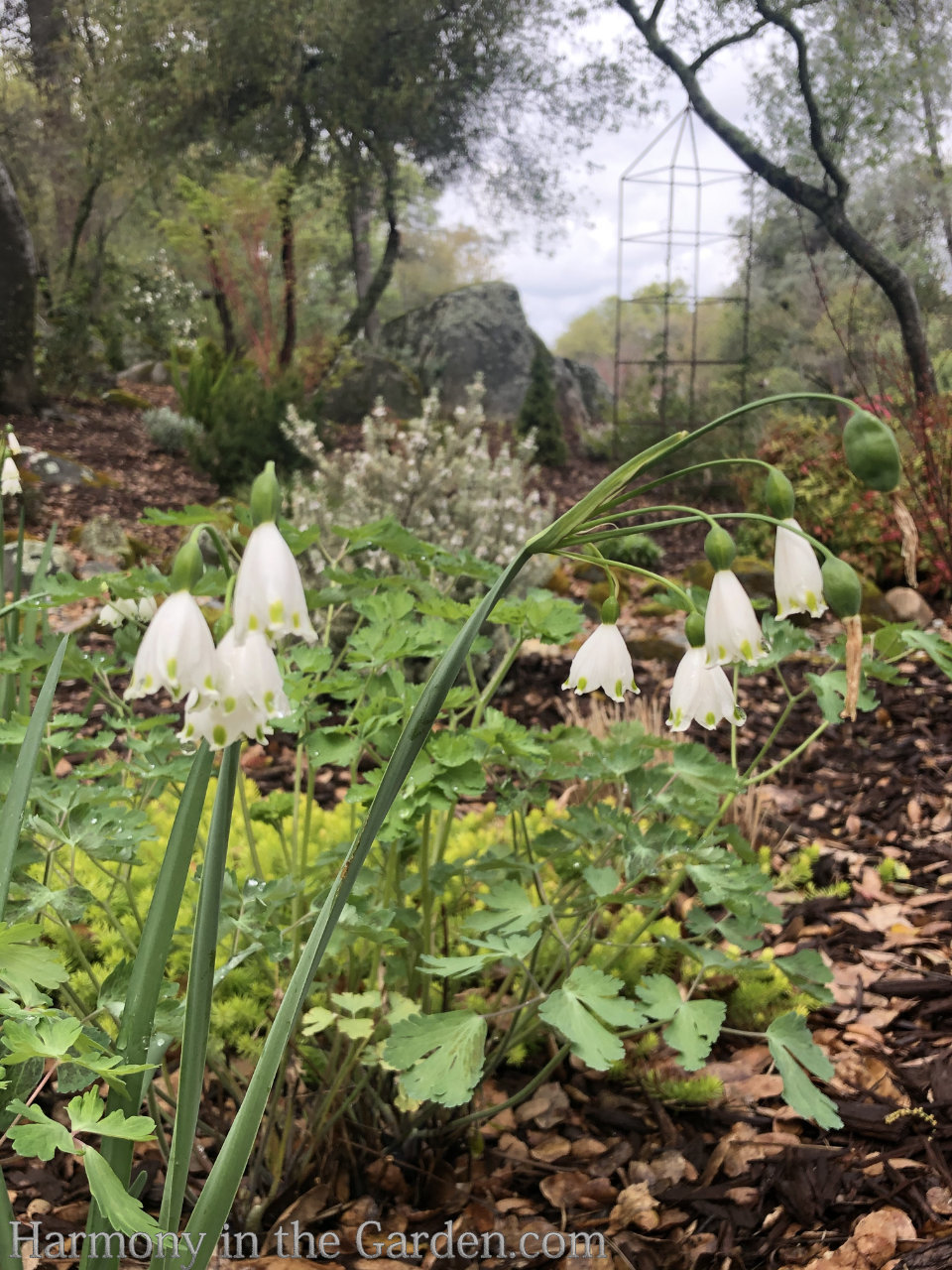
3. Leucojum aestivum (Snowflakes)
I never knew snowflakes (a cousin to Snowdrops) would grow in my garden (which never sees a single snowflake!) but ‘Gravetye Giant’ sure does!
Purchased from Old House Gardens, this variety has extra large nodding white flowers on slender 18″ stems.
Snowdrops produce lots of babies (via bulblets) and will quickly colonize to form an impressive drift, too.
Oh, and did I mention they’re also deer resistant?
Along with tulips and narcissus, the deer turn their nose up at snowdrops on their daily rounds.

4. Crocus
Though technically crocus are corms, and not bulbs, I’m still including them in this post.
Along with snowdrops (above) they’re some of the first to pop up in the early, early spring.
However, they can be finicky and not bloom if our winters are too warm. But, in my opinion, they’re worth the gamble.

5. Liatrus (Blazing Stars)
Similar to crocus (above) liatrus are also considered corms, not bulbs.
However, I’m including them in my list as I so appreciate their late spring blooms which often coincide with late-blooming tulips.
Another interesting thing about liatrus flowers – they bloom from the bottom and slowly work their way up toward the top of the spire. Pretty cool!
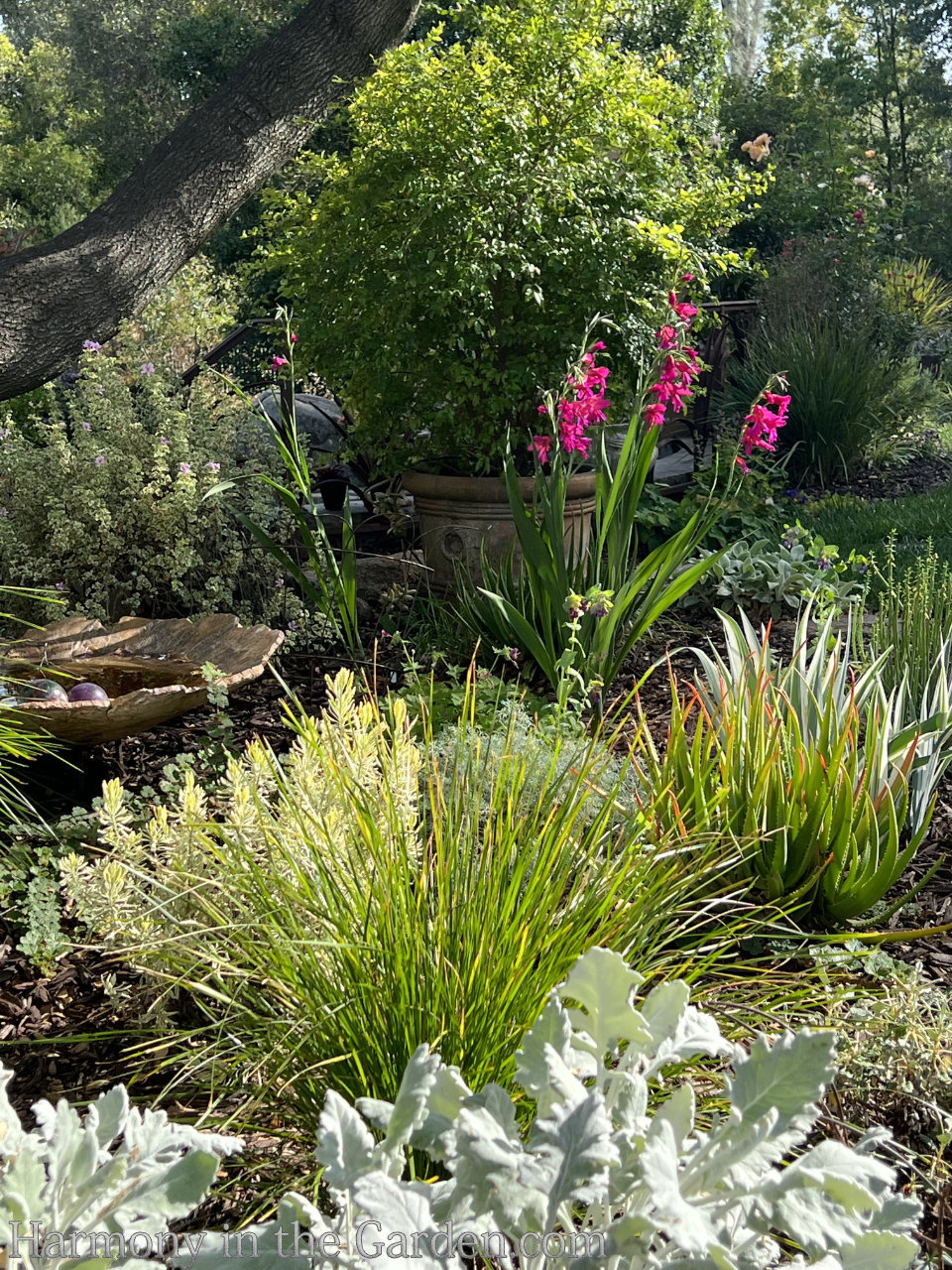
6. Byzantine gladiolus (from Old House Gardens)
I’m normally not a huge fan of gladiolas. However, the smaller sized flower and hot magenta color of this heirloom variety has won me over!
My camera doesn’t do the colors justice, as they’re the most incredible magenta, red, and pink combination you’ll ever see. If you have a large garden, these won’t get lost in the mix!
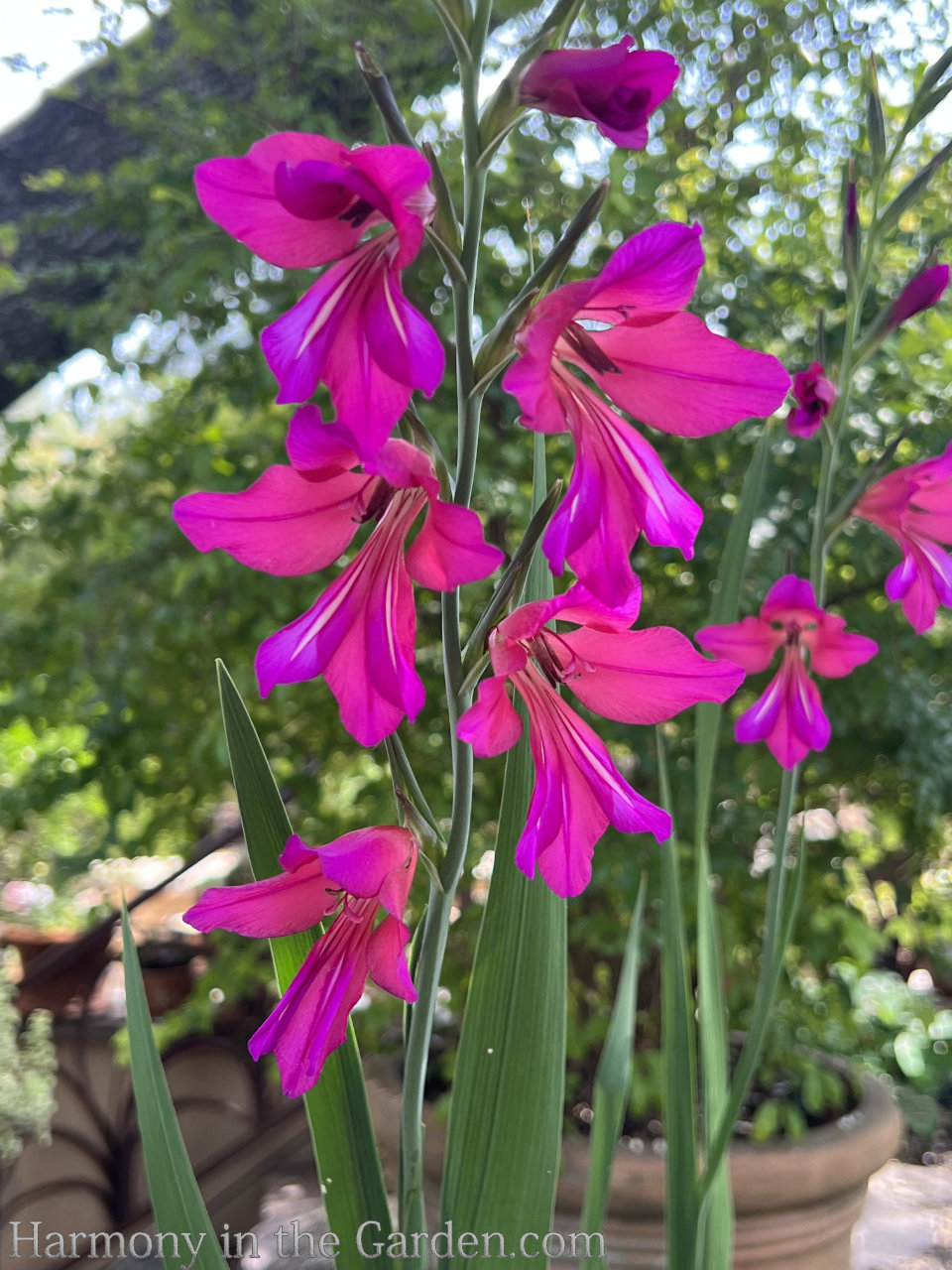
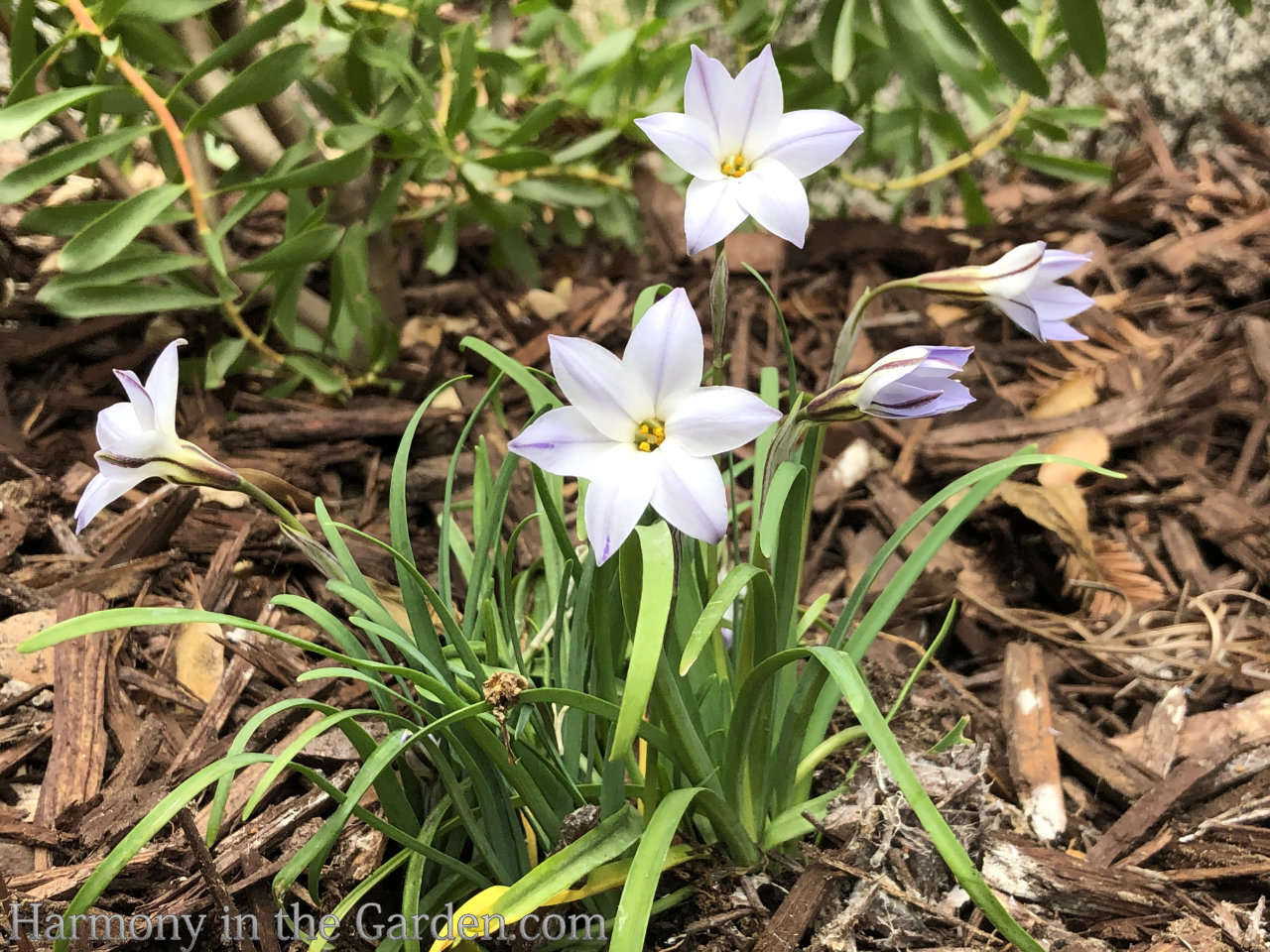
7. Ipheion uniflorum ‘Wisley Blue’
Similar to crocus, ipheion are also some of the lowest-growing bulbs in my garden, reaching only 3 to 4-inches.
They have a wonderful, delicate scent and last up to a week as cut flowers in a small vase. I always look forward to their arrival in early spring.

8. Muscari (Grape Hyacinths)
Talk about colonizing! These little bulbs are like rabbits, producing tons of baby bulbs each year.
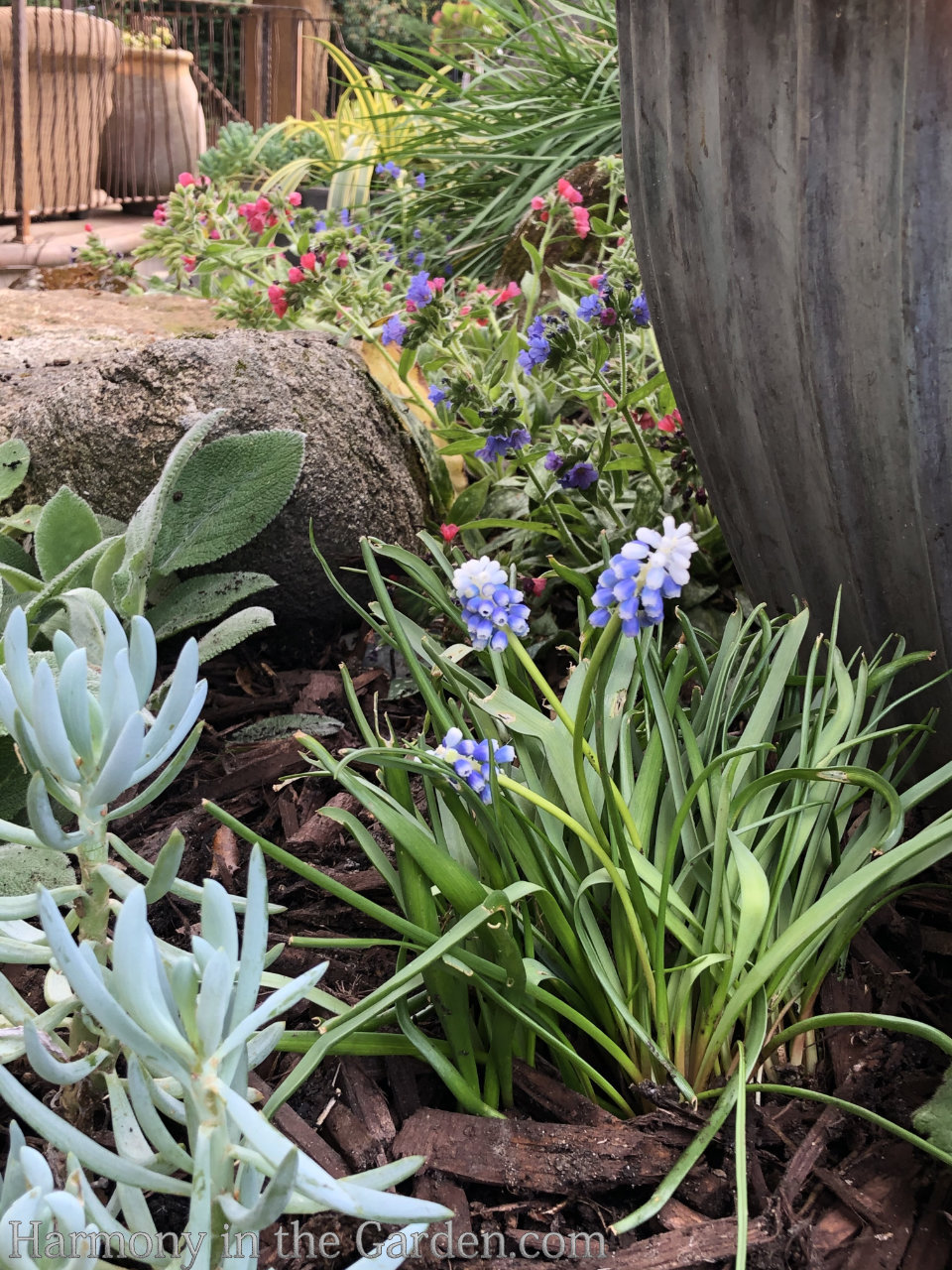

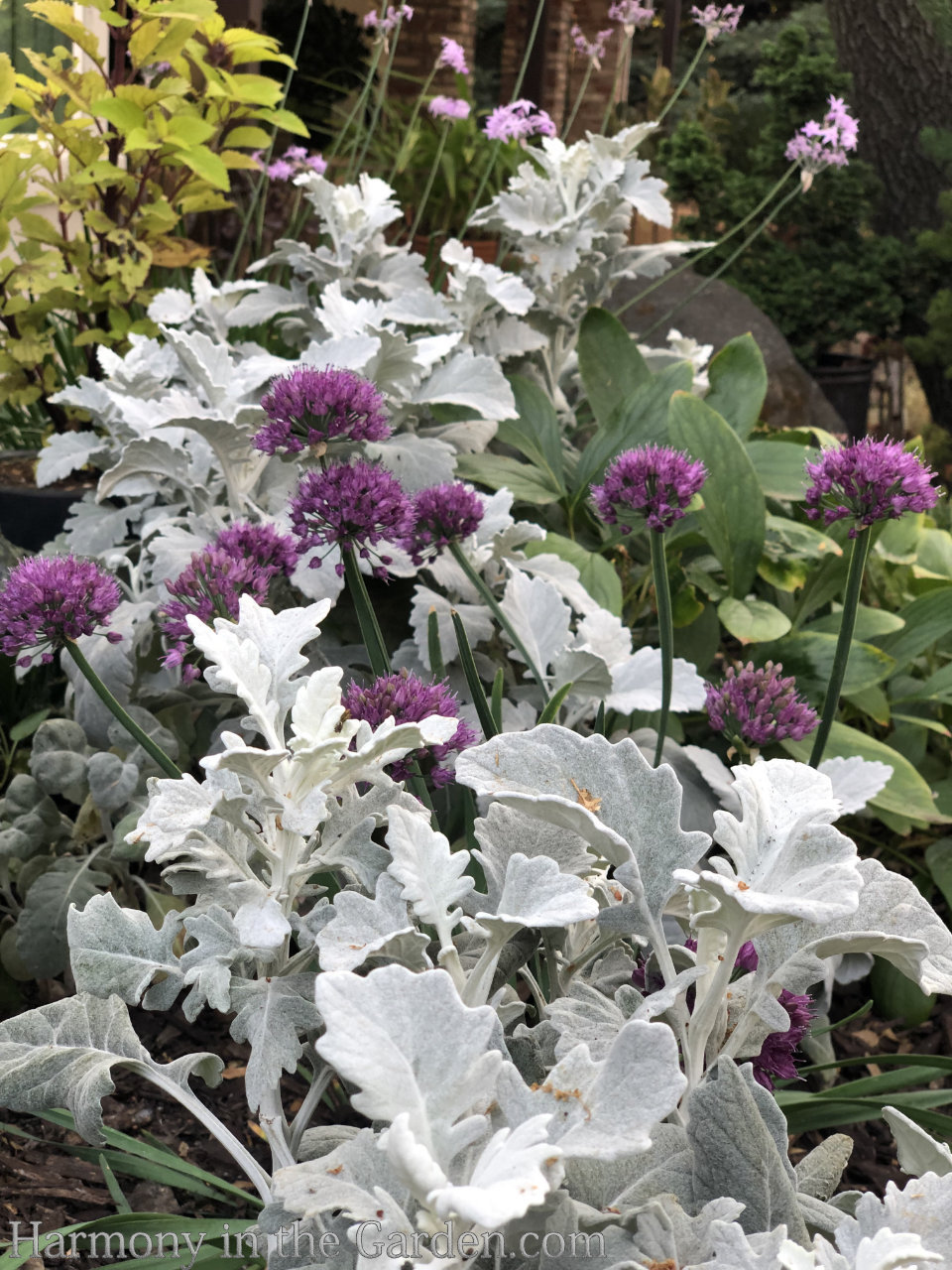
8. Allium ‘Lavender Bubbles’ (late spring)
There are tons of varieties of alliums, but not all thrive in warmer climates.
‘Lavender Bubbles’ is one of my favorites in my garden, with 3-4″ purple globes that look especially gorgeous with senecio ‘Silver Gleam’.
Other warm-climate varieties offered by Telos Rare Bulbs are a. schubertii, a. sphaerocephalum, a. cristophii, and a. ampeloprasum.
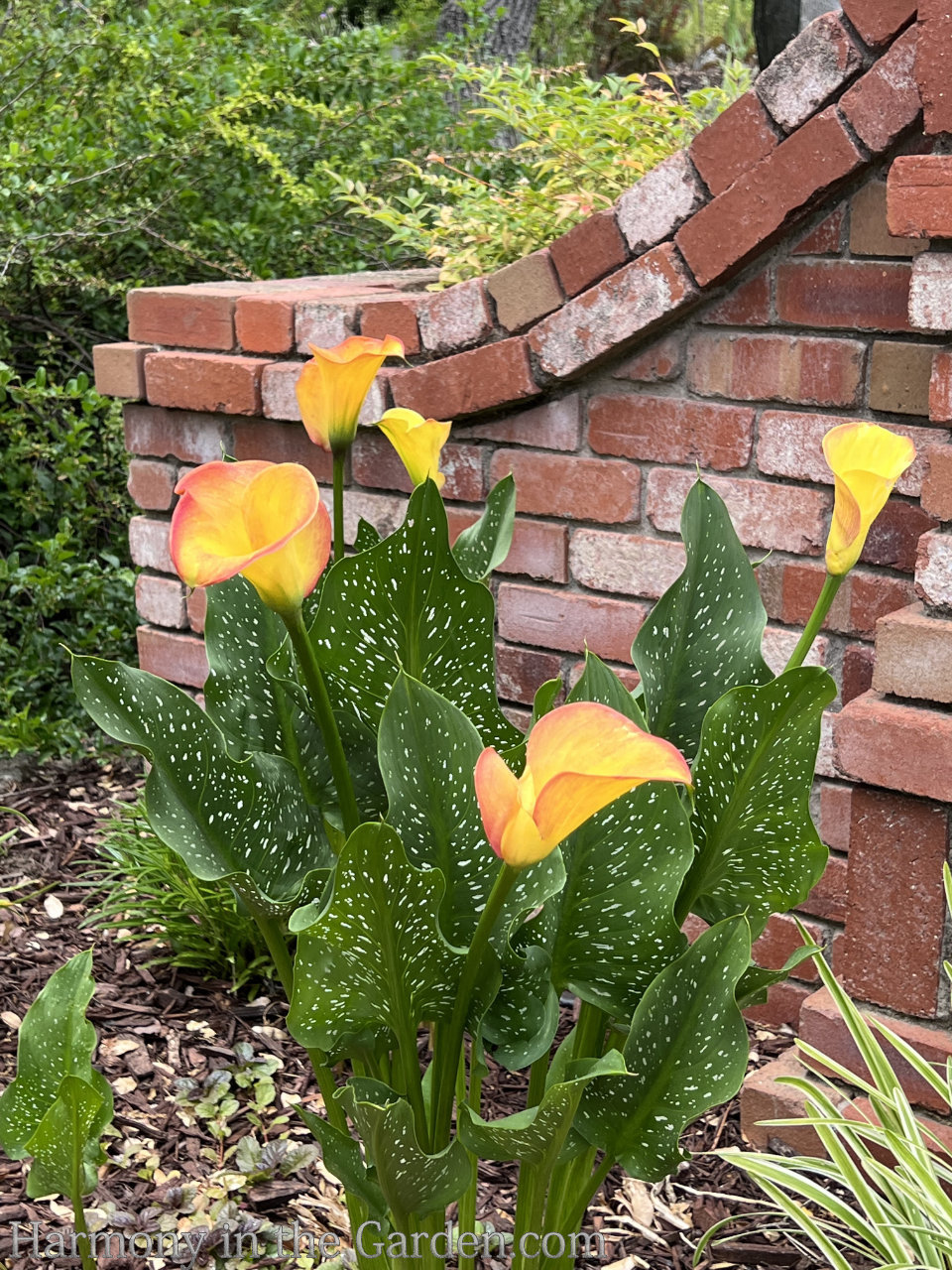
9. Zantedeschia albomaculata (Spotted Calla Lily)
I’m not sure which I appreciate more – the vibrant yellow/orange flowers or the speckled foliage?
Lasting for weeks at a time, this plant gives me months of joy.
And, like most calla lilies, each clump gets larger and larger over time making it easy to divide and spread throughout the garden.
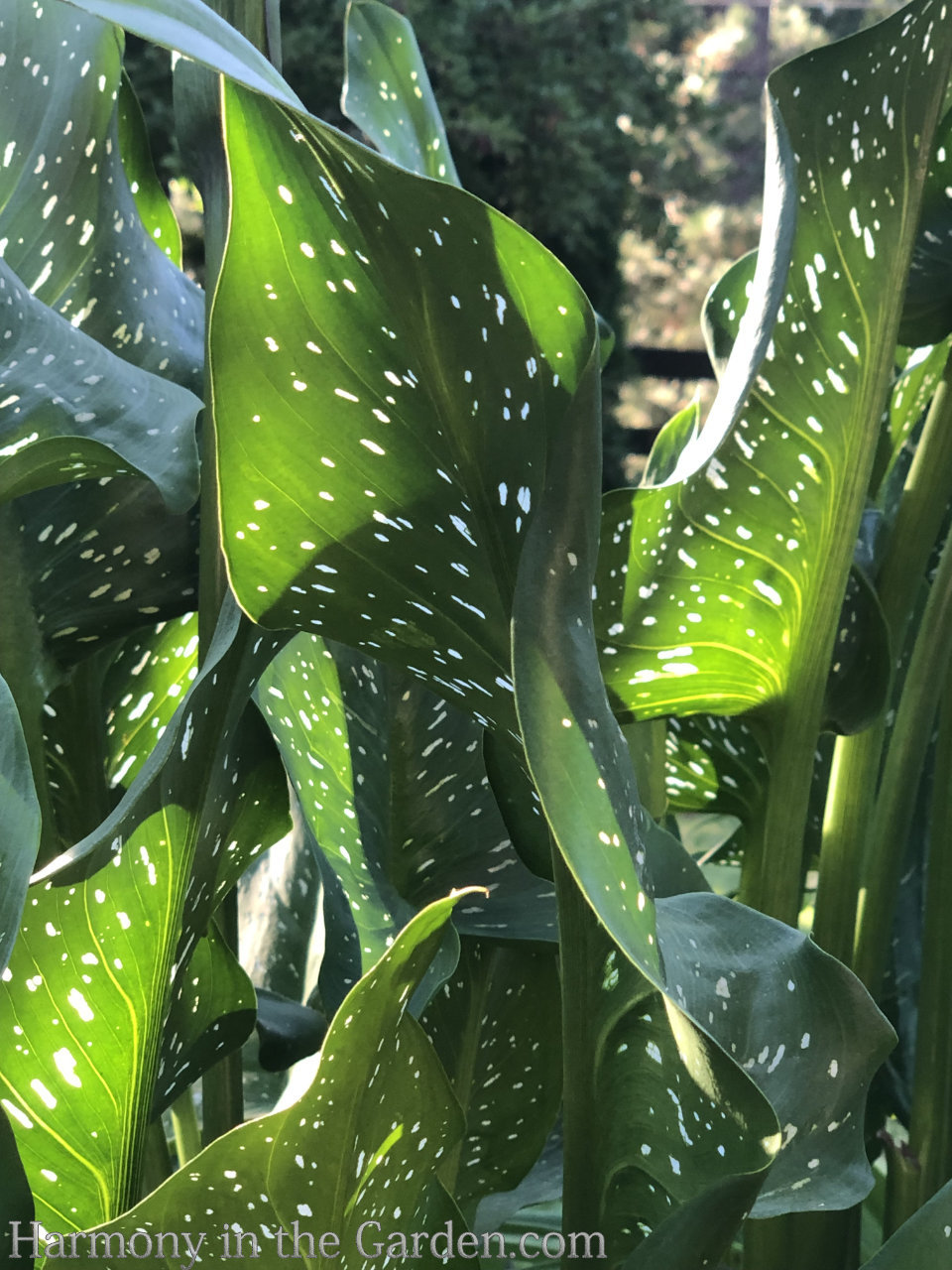
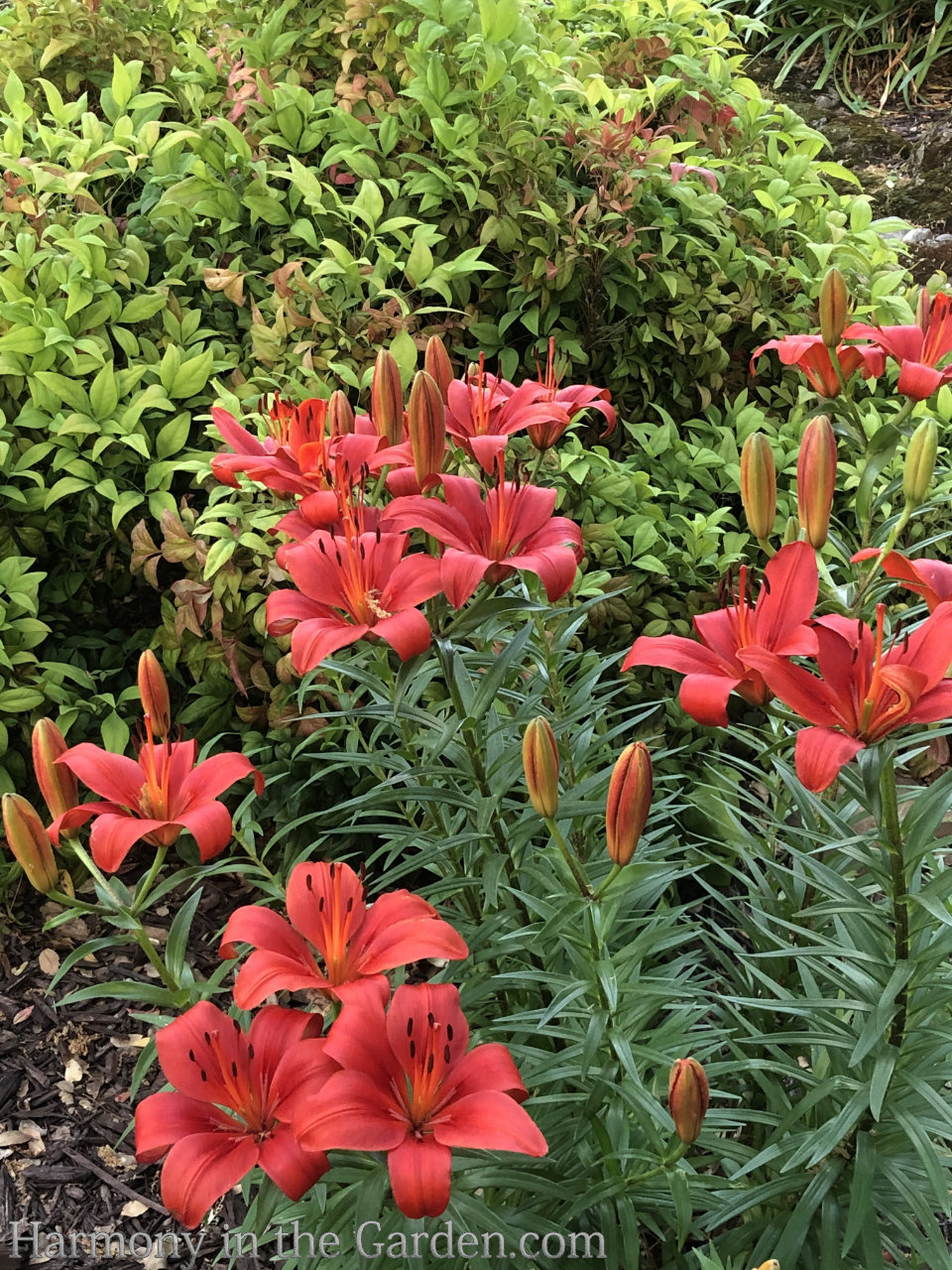
10. Asiatic Lilies (late spring)
Many lily varieties need winter chill to bloom, but lucky for us Asiatic lilies are happy with warm winters.
Available in yellows, oranges, and reds, the deer-resistant blooms are a welcome sight in my late spring garden.
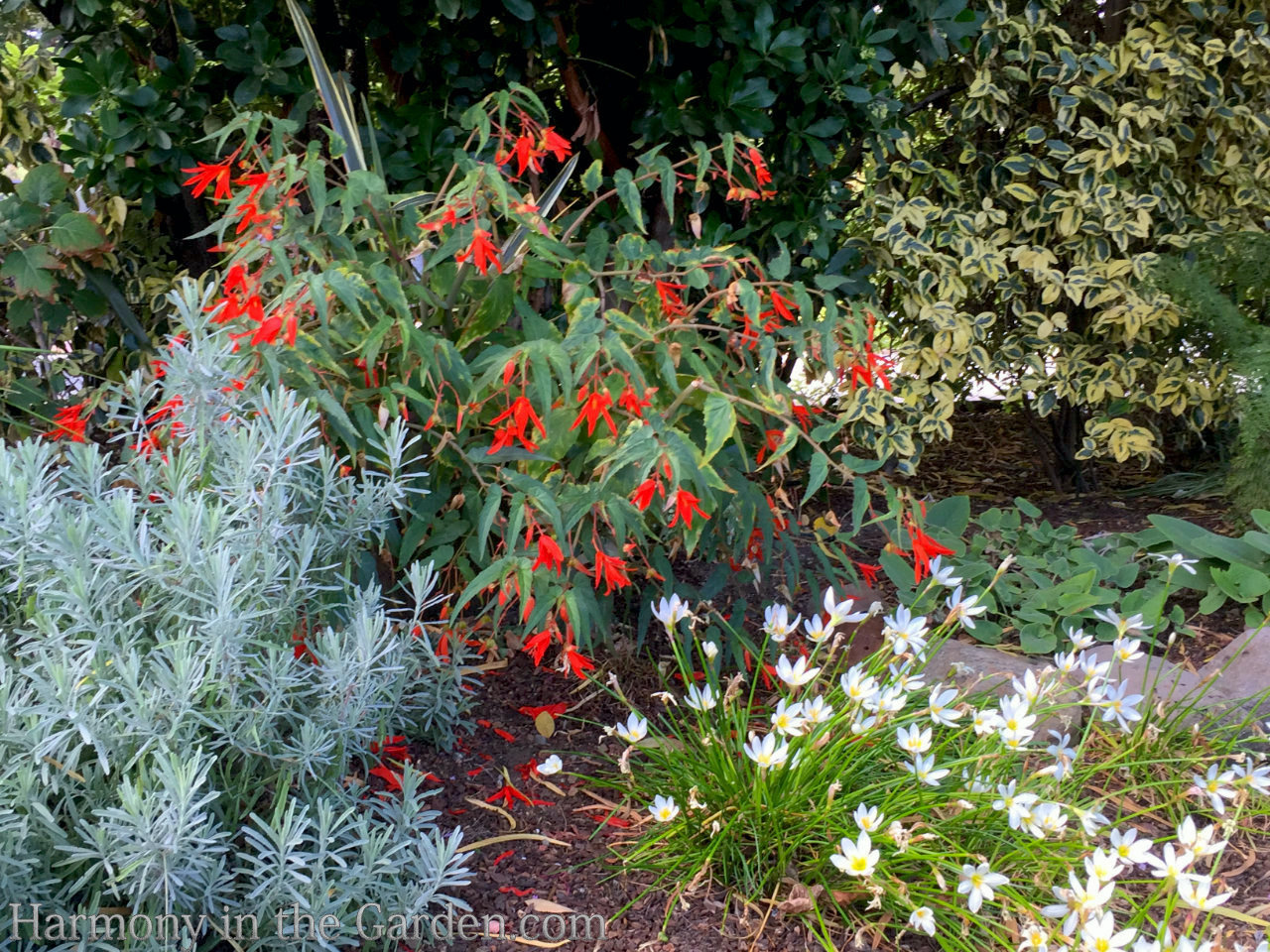
11. Zephranthes (Rain Lily)
This is an interesting bulb, as it looks like a small clump of grass for most of the year.
But once it begins to rain, little flowers in white or yellow (depending on the variety) burst forth in profusion.
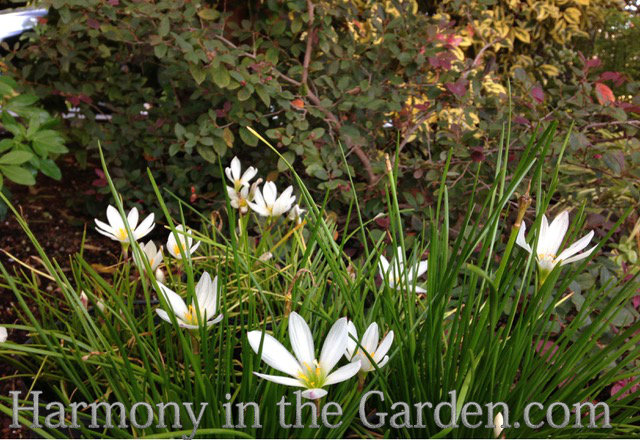
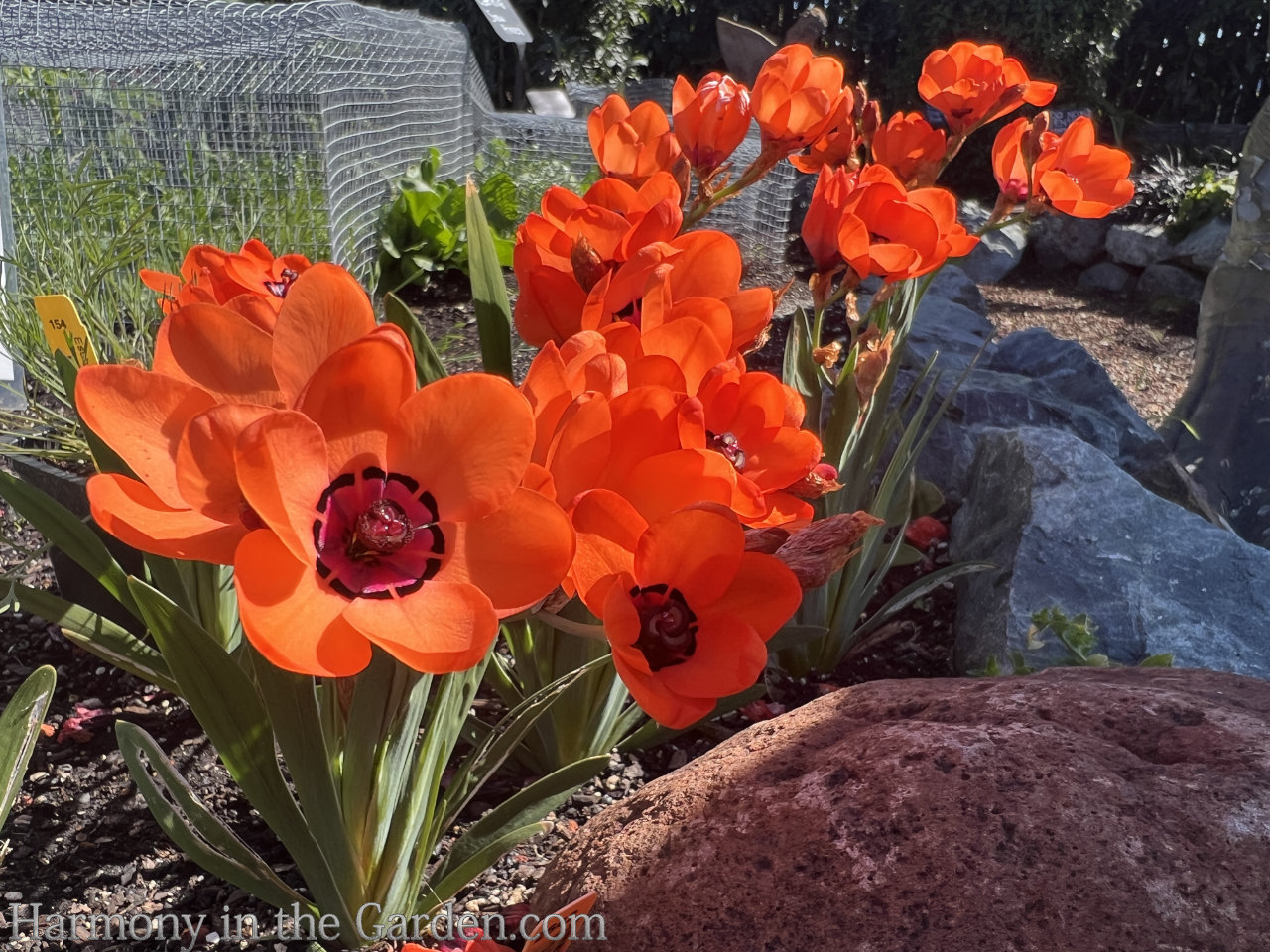
12. Sparaxis elegans (harlequin flower)
Talk about an explosion of color that’s sure to wake up a sleepy early spring garden!
I just spotted these growing and for sale at the new Annie’s Annuals (now called Curious Flora, and just as awesome.)
If you’d like to see how they fare in a garden setting, click here.
And finally, f you’d like to see how I decide where and what bulbs to plant in the garden, take a look at this video I made for GardenDesign.
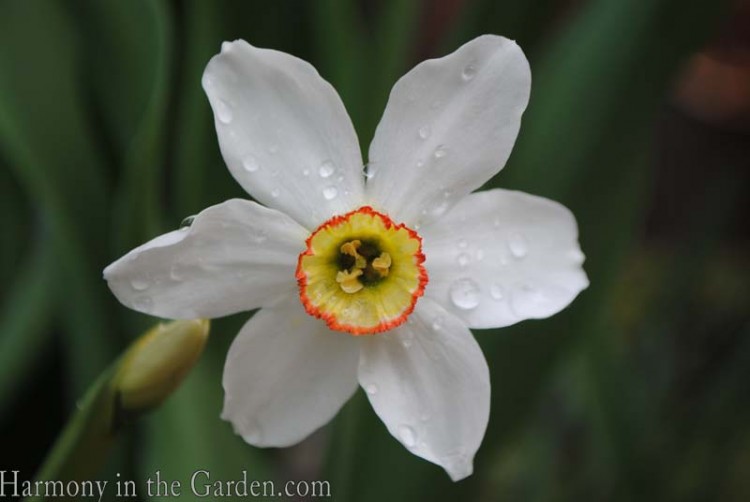
If you’re interested in even more information on warm-climate bulbs, take a peek here:
Heat-Loving Daffodils from Old House Gardens
Adding alcohol to forced paperwhites to stunt their top-heavy growth!
Badass Ephemerals (their title, not mine!)
So tell me, what are some of YOUR favorite bulbs for warm climates?





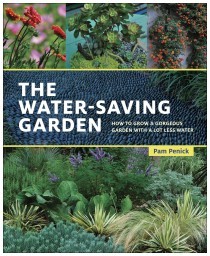
10 Comments
Hi Rebecca,
Just got through planting bulbs, however, your very informative article makes me want to plant more. You opened my eyes to bulbs that I have never thought about before.
Merry Christmas and Happy New to you and your family.
Judy
Hi Judy, I’m glad I gave you some new ideas! I’ve heard from others that a lot of the bulbs I mentioned are sold out by now, but it’s never too late to start planning for next year and maybe try a few new ones. If I remember, I’ll write something in the fall reminding folks to order their bulbs! 🙂 Happy Holidays to you and your family!
Oops, I nearly forgot: Is that Euonymus ‘Emerald Gaiety’ planted over the Crocus?
Hi again – it’s lemon variegated thyme, one of my favorite combos in a container. The crocus pushes through the thyme with no problem.
As always, an inspiring and informative article, Rebecca! You always present traditional, new, and wonderful ideas. Thank you. I enjoy reading your blog so very much.
May you and your loved ones have a very Happy Holiday!
Love,
Heidi
Thank you, Heidi, what a lovely comment! I’m so glad you enjoy my blog – Happy New Year! 🙂
A stunningly informative, easily understood and superbly presented treatise.
Your Ephemeral and devoted subject,
Ishkabible ⚓️
You always make me laugh, Ishy. Now get out there and plant some bulbs! (I think some are horse resistant!) 😉
I love this article Rebecca, especially since we now live in zone 9b. Have the most beautiful Christmas holiday surrounded by your beloved family. Huge hugs coming your way, dear friend!!!
Merry Christmas to you and your family, too, Sheila and I’m so glad you enjoyed this post! xoxo